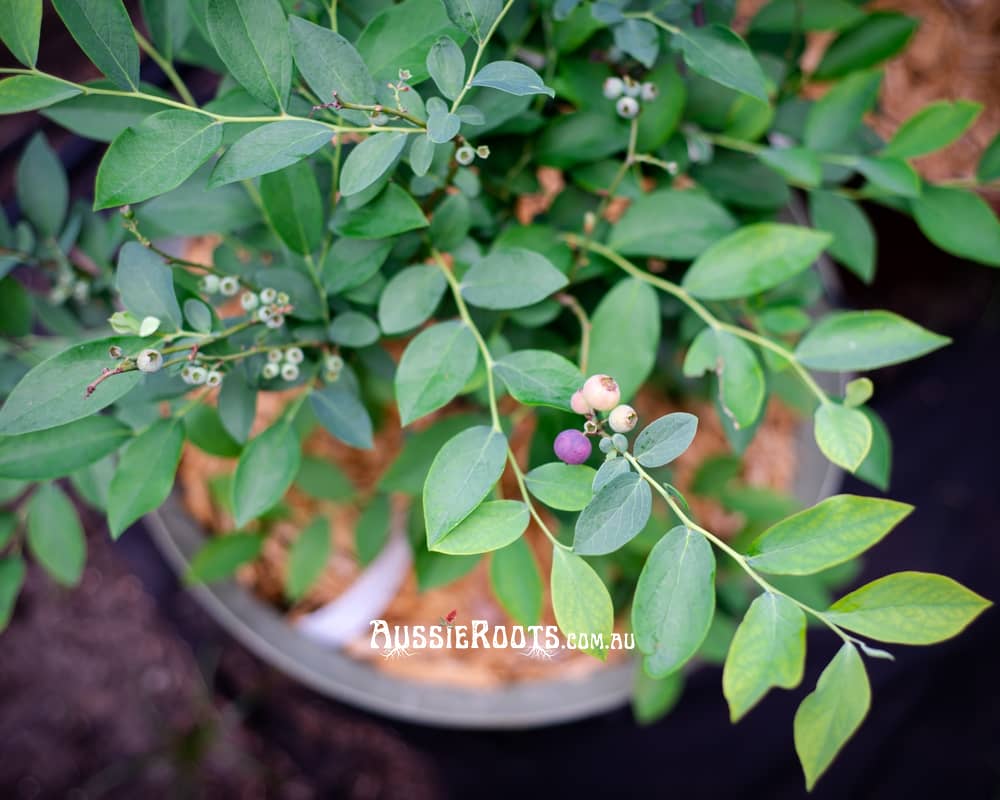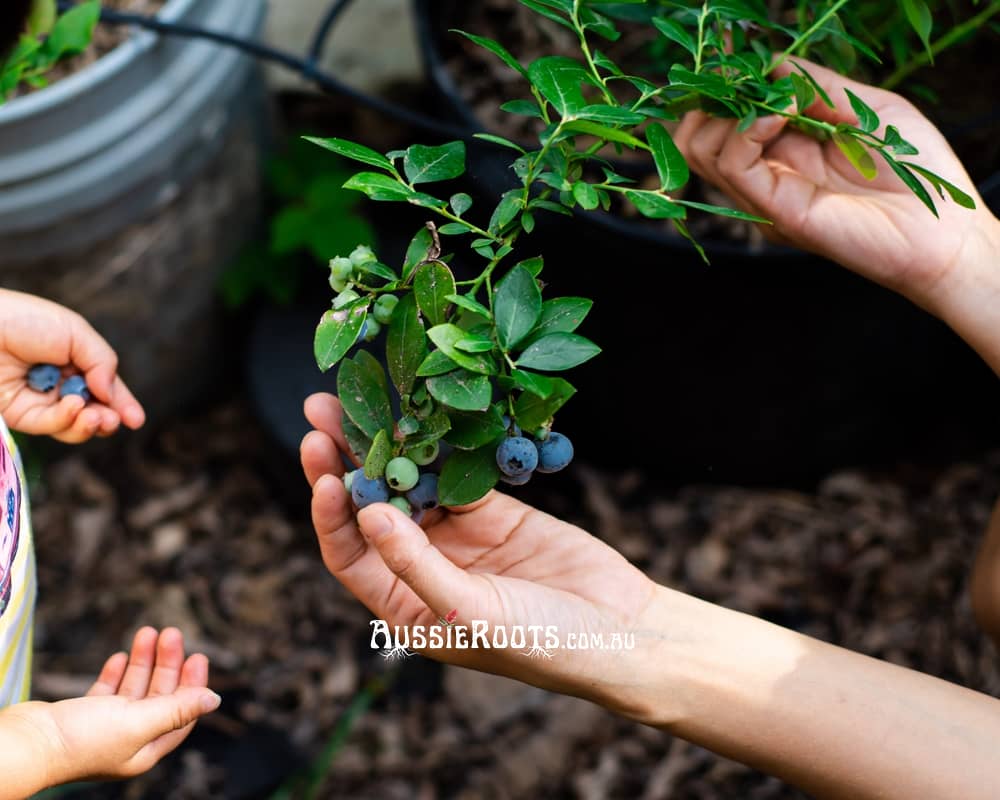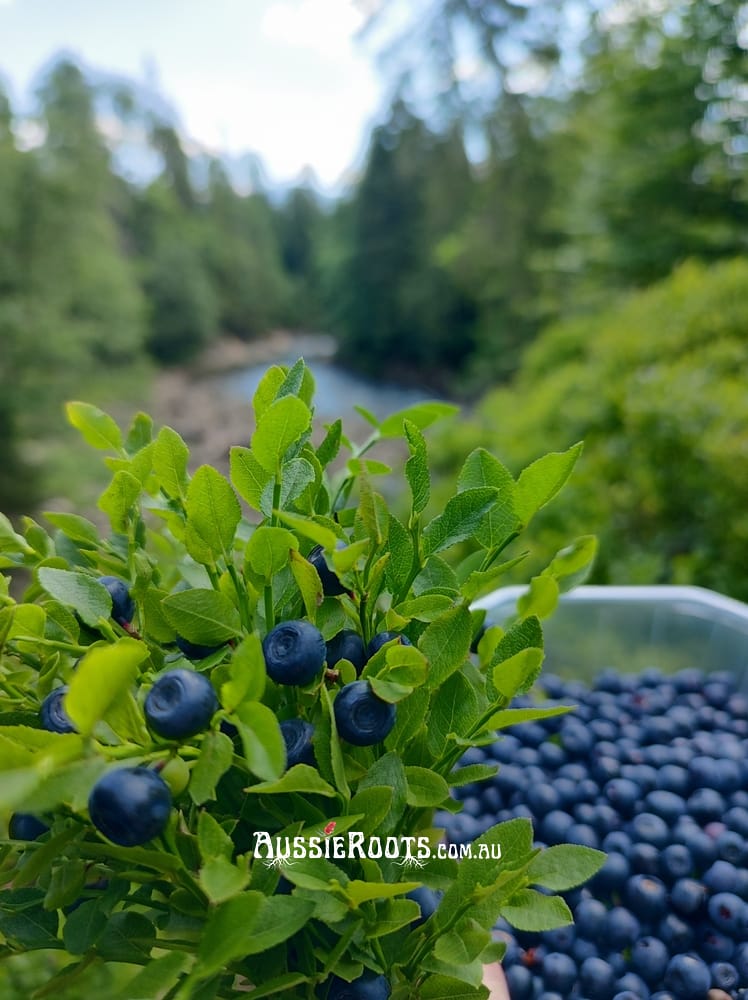How to Grow Blueberries in Subtropical and Tropical Queensland, Australia
Blueberries are a delicious and nutritious fruit that many people love to grow at home. However, in subtropical and tropical Queensland, growing blueberries can be a bit of a challenge due to the climate and soil conditions.
But don’t worry! With the right techniques, you can absolutely grow blueberries here, and they’ll thrive in your garden or in pots. Let’s dive into everything you need to know to get those juicy berries growing.
Why Grow Blueberries in Pots?

First things first – let’s talk about why growing blueberries in pots is a great idea, especially in Queensland. Blueberries love acidic soil (think pH between 4.5 and 5.5), but Queensland’s soil is often too alkaline for their liking. Growing them in pots gives you complete control over the soil conditions, which is key to keeping your blueberry plants happy and productive.
Pots also allow you to move your blueberries around to find the perfect spot. Whether you’re chasing the sun or protecting them from a heavy downpour, pots give you the flexibility to meet their needs, no matter what the Queensland weather throws at you.
I’m currently growing two varieties, Blueberry ‘Kisses’ and Blueberry ‘Burst’, in these handy geofelt grow bags. These bags are awesome because they allow for great drainage and root aeration, which blueberries love.

Disclosure – I’m an affiliate with Aussie Gardener, which means I receive a small commission at no additional cost to you if you decide to make a purchase through my links. You can use coupon code AUSSIEROOTS for 10% off your purchase!
Choosing the Right Variety for Queensland
Not all blueberry varieties are created equal, especially when it comes to thriving in Queensland’s subtropical and tropical climate. Here are some varieties that are well-suited to the region:
- ‘Biloxi’: This variety is a Southern Highbush type that’s well-suited to warmer climates. It doesn’t require much chilling to produce fruit, making it a great choice for Queensland.
- ‘Misty’: Another Southern Highbush variety, ‘Misty’ is known for its vigorous growth and ability to fruit in warmer climates. It also has a pretty high tolerance for heat.
- ‘Sharpblue’: This is a popular variety in warmer regions because it fruits well in lower-chill climates. It’s a heavy producer and does well in pots.
- ‘Sunshine Blue’: A compact, dwarf variety that’s perfect for pots. It has a low chill requirement and produces a decent crop of berries, even in warmer climates.
- ‘Kisses’: This is one of the varieties I’m growing, and it’s a great choice for Queensland’s climate. It’s a Southern Highbush type that’s compact, making it ideal for pot growing. It’s known for producing sweet, juicy berries.
- ‘Burst’: Another one I’m growing, ‘Burst’ is an excellent variety for warmer climates. It’s a heavy producer with large, flavorful berries, and it performs really well in pots.
How to Grow Blueberries
Now that you’ve picked your varieties, let’s get your blueberries growing. Here’s what you need to do:
1. Choose the Right Pot
Blueberries have shallow root systems, so they don’t need a super deep pot, but they do appreciate some room to spread out. A pot that’s about 40-50cm wide and 30-40cm deep should do the trick. Make sure the pot has good drainage holes because blueberries hate soggy roots. The geofelt grow bags I mentioned earlier are a great option for this.
2. Use the Right Soil
As mentioned, blueberries need acidic soil. You can buy a pre-made acidic potting mix designed for azaleas or camellias, which works perfectly for blueberries. Alternatively, you can make your own by mixing peat moss, pine bark, and perlite or vermiculite, or sand. This mix will provide the acidity and drainage that blueberries love.
Sometimes, even with the right potting mix, you might need to lower the pH a bit more. In that case, a product like Yates Soil Acidifier can help. It’s an easy way to tweak the soil pH to keep your blueberries happy.

3. Test Your Soil pH
It’s a good idea to regularly check your soil’s pH to make sure it’s in the ideal range. You can use a simple pH tester like this 2-in-1 soil pH and moisture meter. Just stick it in the soil, and it’ll give you a reading, letting you know if any adjustments are needed.

4. Find the Perfect Spot
Blueberries love the sun, but in Queensland, they’ll appreciate a little protection from the harsh afternoon rays, especially during the hottest part of the year. A spot that gets full morning sun and afternoon shade is ideal. If you’re growing them in pots, you can easily move them around to find the perfect balance.
5. Water Wisely
Blueberries like their soil to be consistently moist but not waterlogged. Water them regularly, especially during the hotter months, but make sure the water drains well to avoid root rot. Using rainwater or distilled water is best because it’s more acidic than tap water, which can be too alkaline.
6. Mulch for Moisture and Acidity
Mulching is your blueberry’s best friend. Use an acidic mulch like pine needles or bark mulch to help maintain soil acidity and retain moisture. Spread the mulch around the base of the plant, but keep it a few centimeters away from the stem to prevent rot.

7. Fertilize the Right Way
Blueberries are light feeders, so you don’t need to go overboard with fertilizer. Use a fertilizer formulated for acid-loving plants, like azalea or camellia fertilizer, and apply it in early spring and again in late summer. Avoid fertilizers with too much nitrogen, as this can encourage leafy growth at the expense of fruit.
8. Prune for Productivity
Pruning is essential to keep your blueberry plants healthy and productive. Prune in late winter or early spring before new growth starts. Remove any dead or damaged wood, and cut back some of the oldest stems to encourage new growth. This will help maintain a balance between old and new wood, which is where your berries will grow.
Overcoming Queensland’s Climate Challenges
While blueberries aren’t naturally suited to Queensland’s subtropical and tropical climate, there are ways to help them thrive:
1. Managing Humidity
Queensland’s humidity can be tough on blueberries, as it can lead to fungal diseases like powdery mildew. To prevent this, ensure good air circulation around your plants by spacing them out and pruning regularly. If you notice any signs of fungal issues, treat them early with an organic fungicide or a homemade remedy like a baking soda spray.
2. Protecting from Heatwaves
During heatwaves, your blueberries might need some extra TLC. Consider moving potted plants to a shadier spot or even indoors during the hottest part of the day. You can also increase your watering slightly to help them cope with the stress of high temperatures.
3. Winter Care
Even though Queensland is known for its generally mild winters, your blueberries will still need a bit of attention during the cooler months. Here’s what that means:
Sheltering Potted Plants
One of the advantages of growing blueberries in pots is that you can move them around. If frost is on the way, simply move your pots to a more sheltered location, like under a patio, against a wall, or even inside a garage for the night.
Winter Chill Requirement
Some blueberry varieties actually benefit from a period of cooler temperatures, known as “winter chill.” This chill helps to trigger the plant’s natural cycle, leading to better flowering and fruiting in the following season. In Queensland, particularly in the cooler areas (like the Granite Belt or parts of the Sunshine Coast hinterland), you might get enough chill during winter to naturally meet this need.
Protection in Warmer Zones
However, in the warmer parts of Queensland (like coastal areas or the tropical north), winters might not get cool enough to provide that beneficial chill. On the flip side, these areas can also experience sudden cold snaps or unexpected frost, which can harm your plants. Blueberries are not frost-hardy, so if you’re growing them in a warmer zone where frost is rare but possible, you’ll need to take extra steps to protect them.
Frost Protection
If a frost is forecast, it’s important to protect your plants. You can do this by covering them with frost cloth, burlap, or even an old sheet. The idea is to keep the frost from settling on the leaves and branches, which can cause damage.
Harvesting Your Blueberries

With the right care, your blueberry plants should start producing fruit within a couple of years. The berries will turn from green to pink and then to a deep blue when they’re ready to harvest. Pick them when they’re fully ripe for the best flavor. Blueberries don’t all ripen at once, so keep an eye on your plants and pick the berries regularly.
Blueberry Fields Forever
Growing blueberries in subtropical and tropical Queensland might take a little extra effort, but it’s absolutely doable – and well worth it. By growing them in pots and following these tips, you can enjoy a delicious harvest of juicy, homegrown blueberries.
Whether you’re popping them into your morning cereal, baking them into muffins, or just eating them straight off the bush (I’m planning on doing all of these!!!), there’s nothing quite like the taste of fresh blueberries grown in your own backyard.
Happy gardening, and may your blueberry plants flourish!












